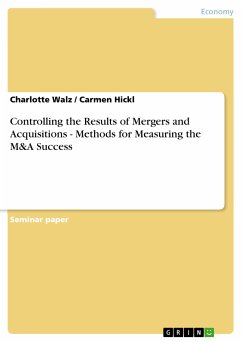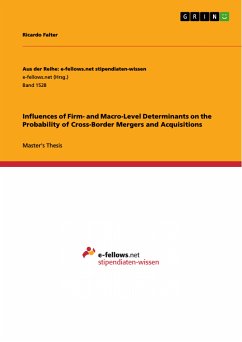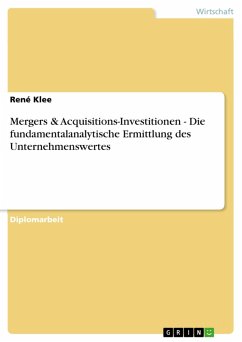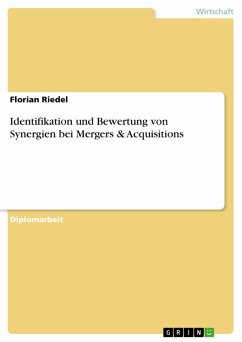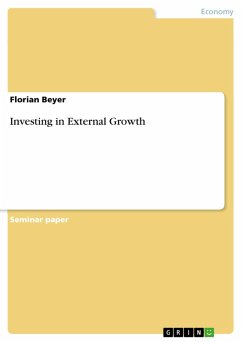Seminar paper from the year 2004 in the subject Business economics - General, grade: 1,0, Heilbronn University of Applied Sciences, course: Spezielle BWL - M&A, language: English, abstract: Many companies pursue a growth strategy by executing acquisitions. But in recent years they have seen too many publications showing that M&A failure ratios exceed success ratios. In this paper it is examined which methods can be applied for measuring the M&A success and reasons, why these studies concluded in negative results, are given. For measuring the success of M&As, the definition of objectives, the company wants to achieve by acquiring, is essential. In general, the overall goal is to create shareholder value though each acquiring company has its own specific secondary goals. Within this paper these secondary goals are divided into the financial dimension (e.g. synergies), HR dimension (e.g. gaining key personnel) and market strategic dimension (e.g. gaining market share). Before measuring the M&A success, some general problems which affect all evaluation methods have to be considered. The first problem refers to the period of measurement. It is difficult to find the adequate period as it considerably differs amongst the various evaluation methods. The second problem refers to the comparison of measurement results. For a realistic view, the results should not only be observed before and after the transaction but as-if figures of the single entities, in case of not having merged, should be considered. The first method to measure M&A success is the objective evaluation model which can be subdivided into the annual accounts oriented method, the capital market oriented method and the event oriented method. The annual accounts method considers various ratios out of the external accounting system (e.g. RoE). It is rather a past-oriented method. The second method to measure M&A success is the subjective evaluation method which includes questionings of people involved in the M&A process (managers, employees, internal and external experts). This method is especially important for measuring the success of the integration process and, although not useful as an isolated assessment, it makes a valuable contribution to the evaluation of the M&A success. The various methods can lead to different results, therefore general statements about success or failure of M&A deals can only be made under reserve. Important aspects (e.g. distortion of study results due to large loss deals) were not considered. According to recent (more sophisticated) studies, M&As are able to generate value and growth under the right circumstances.
Dieser Download kann aus rechtlichen Gründen nur mit Rechnungsadresse in A, B, BG, CY, CZ, D, DK, EW, E, FIN, F, GR, HR, H, IRL, I, LT, L, LR, M, NL, PL, P, R, S, SLO, SK ausgeliefert werden.

